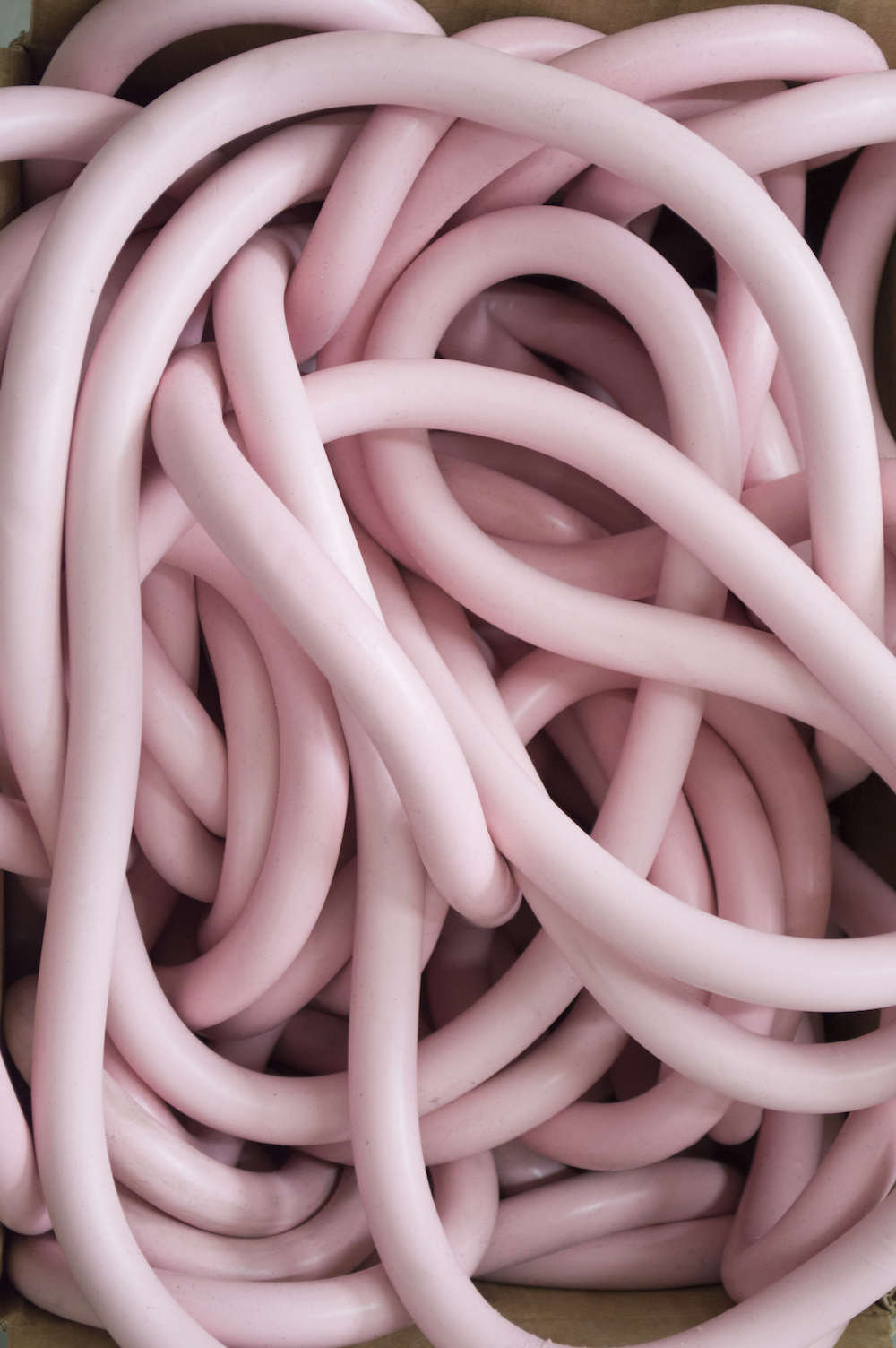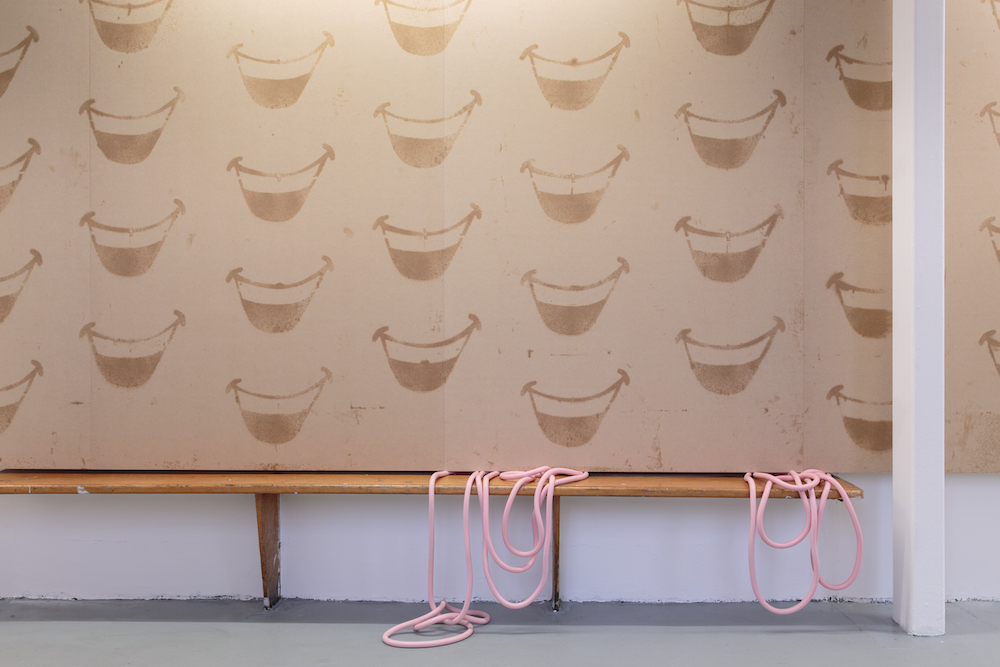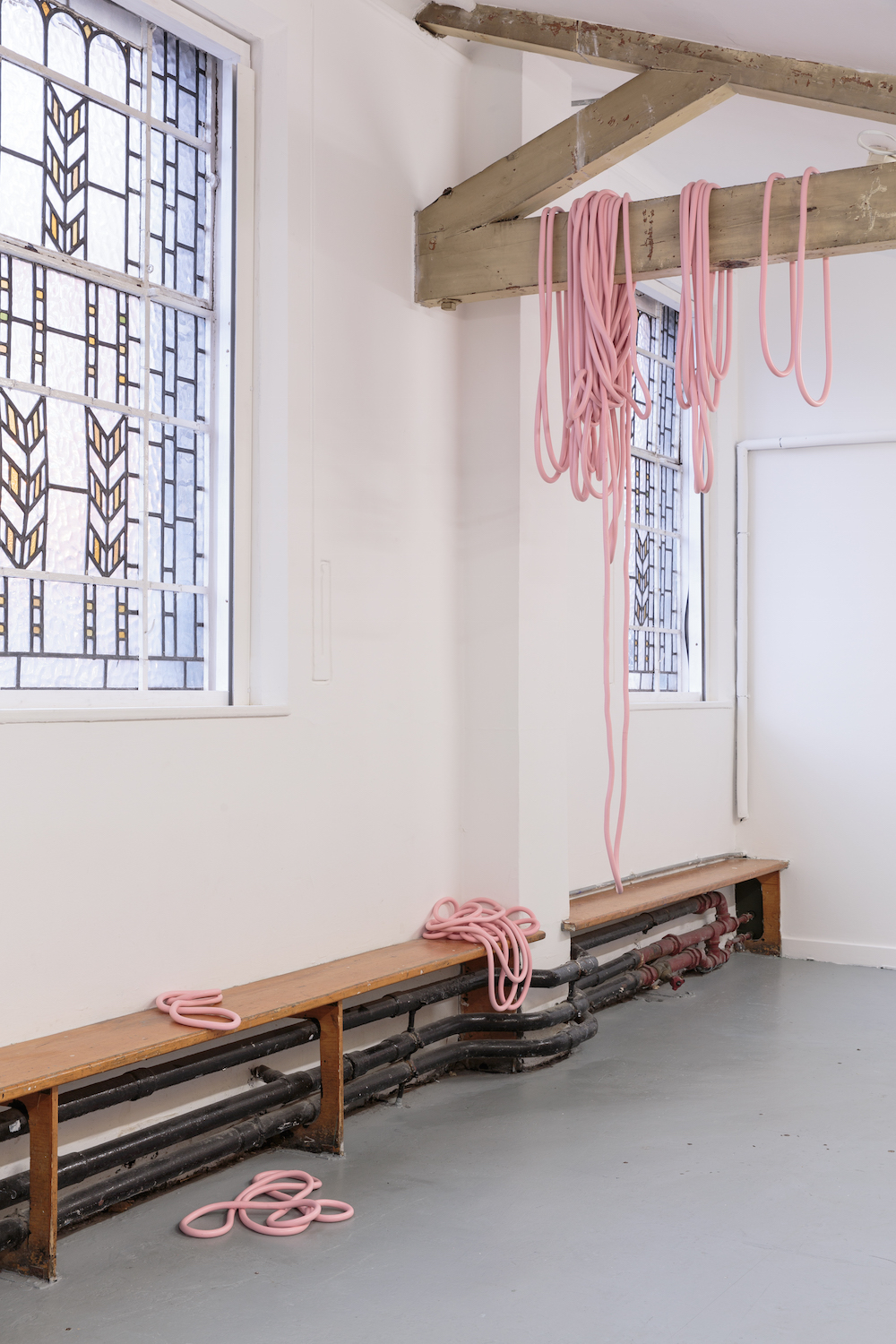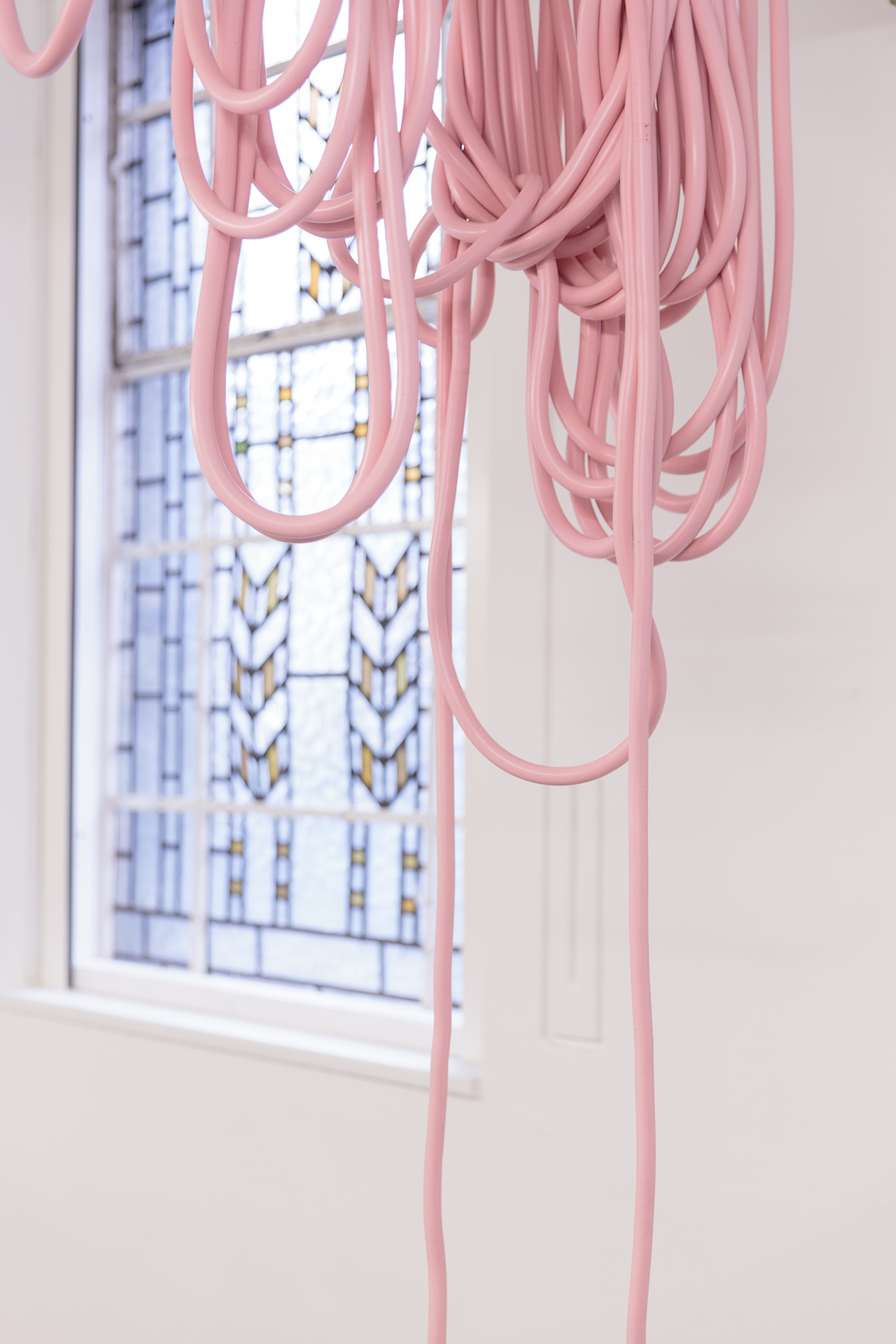I have a confession to make. If you were to peer into my living room window at 11am on a typical Saturday morning, you would most likely find me hunched Gollum-like over my iPhone, the Domino’s delivery app on screen, ordering a Half ‘n’Half (pepperoni on one side, mushroom, sweetcorn and pineapple on the other) and a side of Chicken Kickers. An hour later you may find me lying horizontally on the sofa, tomato sauce blobbed on my top, crumbs surrounding me, one last slice sitting in a grease-stained box.
This would be a shameful confession, were it not for the thousands of other people doing this, all over the country, every day (but especially on weekends). Domino’s are rather popular with people of a certain age I hear, so popular in fact, that London’s Zabludowicz Collection have dedicated an entire show to the thick crusted, heavily tomato-ed, hangover heaven that is the Domino’s pizza.
British-born Jemma Egan is the artist in question. The recent RCA graduate is showing as part of the gallery’s Invites series, this particular body of work informed largely by the Channel 4 documentary A Slice of Life. I watched the documentary before heading over to meet Egan, and it opened up a whole new world of Domino’s obsessives, one that even I, as the relatively obsessive consumer, have missed. This is the world of Dominoids—employees of Domino’s who are so fervent in their loyalty and love of the company that they compete in national championships to be the fastest pizza maker.
‘In some way, it is really cult-like,’ Egan tells me, ‘but I also believe for the people working there it has genuinely enhanced their life. They’re passionate about their career and, it’s actually the Welsh guy who says if it wasn’t for this career he’d probably ‘be dead or in jail’. I believe him. It might not be true, but I believe that it is for him.’
One of Egan’s three pieces focuses on the almost ritualistic movements that workers undertake while they’re training to compete. Video work Dead or in jail follows her own rhythmic hand movements as she attempts to repeat the steps. ‘It’s the hands that they are marketing,’ says the artist, ‘that this is done by hand, it doesn’t just come in as a large pizza base. In the documentary, in the training camp in Colchester they are shown learning how to do this and it looks more like Tai Chi. They’re doing it with all these pizza boxes behind them and what struck me was that they are learning these movements without dough.’
Of course, this on trend language—handmade, locally sourced—couldn’t be further from our typical understanding of fast food. A second work that commands much of the room consists of various long, smooth tubes, hanging intestine-like from from the ceiling and dumped in fleshy puddles on the floor. Egan is interested in ‘the ‘Frankenfood’ element’.
‘Porkies was based on the idea of the hot dog stuffed crust pizza, when that was out. I went and ordered one and was surprised that there were actual hot dogs going around the crust. Part of me was surprised that it wasn’t one tube that fitted around the whole pizza, or even worse, a loop that was the perfect size. So that’s where this object comes from, it’s the fictionalised hotdog that goes all around the crust of the pizza.’
Although pretty grotesque sounding—anyone who has eaten a stuffed crust pizza of any kind will surely shudder at the idea of the massive loops of innards that hung around the factory before making their way to your mouth—the artwork itself is rather beautiful. Smooth and sheened, though obviously utterly inedible. Not too far from hotdogs themselves. (A haunting comment from The Thick of It comes to mind whenever I encounter cheap sausages now: ‘It is literally mashed-up Dalmatian head and sawdust, you know that?’)
On the opposite wall, the manic grin of Domino’s mascot is repeated, floor-to-ceiling, in stencilled grease–recognisable immediately to any take-away fan as pizza-aftermath. But still this feels more of a curious exploration of the brand, than a vicious attack.
As Egan tells me, ‘I see them [food brands] as really human. It would be strange to grow up and not experience these brands. Maybe it’s wrong to say that they’re important within our lives but I certainly don’t go out of my way to avoid them. It’s just part of my culture and what I’ve grown up with. For a lot of people that’s a reality as well, that’s eating out, it’s a treat. And I think that’s ok.’
Zabludowicz Collwction Invites: Jemma Egan is showing at Zabludowicz Collection until 6 March









